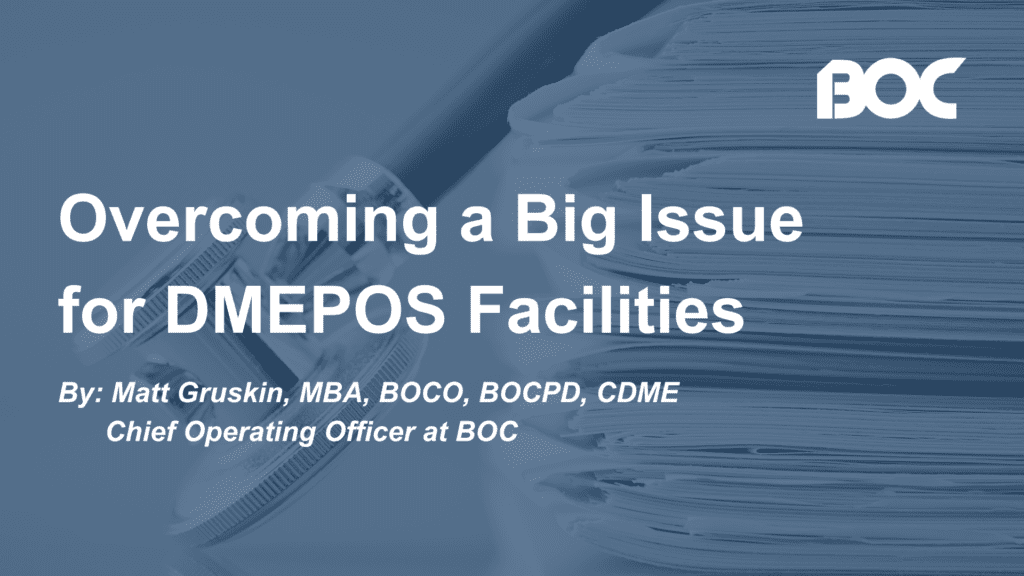By: Matt Gruskin, MBA, BOCO, BOCPD, CDME, Chief Operating Officer at BOC

As part of my role at BOC, I have the privilege of speaking with our customers in the field on a regular basis. As I reflect on my conversations with DMEPOS professionals, the most significant daily issue I hear about is related to obtaining compliant documentation from the referring physician or healthcare provider. In order to bill Medicare and other insurance providers for a patient’s DME products, DMEPOS suppliers must submit complete claims that include such requisite documentation to justify payment. Based on my own experience as an orthotist, this resonates with me as I know it can be challenging. However, there are strategies you can use to reduce its negative impact on your business and continue to provide what is needed for your patients.
First, it’s important to understand that most physicians are also working hard to manage the paperwork required in healthcare today. Providers are often feeling overwhelmed and burnt out due to the current back office demands on their time. A 2019 national study reported in the Journal of the American Medical Association (JAMA)[1] suggests that physicians spend an average of 1.77 hours daily completing documentation outside office hours. This insight helps explain why facilities face documentation challenges, and the study was conducted before the additional challenges that occurred during the COVID-19 pandemic. A recent Harris Poll survey[2] notes that excessive documentation requirements and staffing challenges are significant contributors to clinician burnout.
Acknowledging and understanding this situation allows you to approach the challenge of obtaining documentation with compassion and perhaps a bit more patience when having to remind referring providers of what might seem like an easy task. But, on the other end of the spectrum, these documents are important for your business and patients and need to be pursued diligently.
So, what can you do? In my opinion, the key to success is effective communication. If you aren’t certain where to start, it can help to begin with creating an operational workflow. Visually map out the process, prioritizing key steps and documenting what it will take to reach your goal. It’s important to empower your employees as part of this workflow to ensure everyone understands their role and has what they need to succeed. And, as with any process, you need to assign accountability – part of compliance means that everyone must play their part. I suggest you create that workflow digitally or manually and implement it with your team.
Unfortunately, there currently isn’t a silver bullet that will solve this problem for you. It is very difficult to compel your referral sources to respond in a timely fashion. That said, software can help you to implement an operational workflow to remind your referral partners that their documentation is needed to drive a positive outcome for their patients. The process you design can even prompt them to incorporate specific language based on the device that was ordered. Automating processes as much as possible can help ease the burden on your employees and avoid further delays.
Communicating openly and often is the best way to create a relationship with your referral sources that places the patient at the center of the request. As you focus on relationship building with your referral sources, it may help to have candid conversations about their communication preferences, as well. For example, due to patient visits, many clinicians don’t access email for most of the day and would prefer to respond more quickly to a phone call. Establishing effective communication can improve the receipt of your compliant documentation and your professional relationships overall. For more information about documentation and the standards which BOC-accredited businesses must maintain, visit bocusa.org.
[1] Gaffney A, Woolhandler S, Cai C, et al. Medical Documentation Burden Among US Office-Based Physicians in 2019: A National Study. JAMA Intern Med. 2022;182(5):564–566. doi:10.1001/jamainternmed.2022.0372
[2] https://ehrintelligence.com/news/excessive-documentation-staffing-challenges-driving-clinician-burnout
